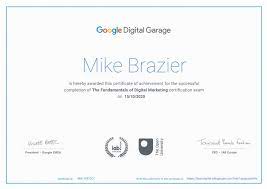Google Web Designer: The Ultimate Tool for Creating Engaging Web Content
Google Web Designer is a powerful tool that enables users to create engaging and interactive web content. With its intuitive interface, designers and developers can easily create HTML5-based designs, animations, and advertisements that work seamlessly across different devices and platforms.
One of the key features of Google Web Designer is its ability to create responsive designs that automatically adjust to fit different screen sizes. This means that designers no longer have to worry about creating multiple versions of their content to cater to different devices. Instead, they can create a single design that works perfectly on desktops, tablets, and smartphones.
Another advantage of using Google Web Designer is its integration with other Google products such as AdWords and DoubleClick Studio. This makes it easy for designers to create high-quality ads that are optimized for performance and audience targeting.
Google Web Designer also offers a variety of tools for creating engaging animations and interactive elements. These include 3D authoring tools, drawing tools, and timeline-based animation features. With these tools, designers can create stunning visuals that capture the attention of their audience and keep them engaged with their content.
In addition to its design capabilities, Google Web Designer also offers a range of publishing options. Users can publish their designs directly to their website or export them as HTML5 files for use on other platforms. This flexibility makes it easy for designers to share their content with others and reach a wider audience.
Overall, Google Web Designer is an excellent tool for creating engaging web content. Its intuitive interface, responsive design capabilities, integration with other Google products, animation features, and publishing options make it a must-have tool for any designer or developer looking to create high-quality web content that stands out from the crowd.
5 Essential Tips for Maximizing Your Design Potential with Google Web Designer
- Use the Google Web Designer templates as a starting point for your design. They are pre-built and can help you get started quickly.
- Take advantage of the animation features in Google Web Designer to create dynamic and engaging content.
- Utilize the Responsive Design feature to ensure that your designs look great on all devices, from desktops to mobile phones.
- Preview your work in real-time with the Live View mode to make sure everything looks perfect before publishing it online.
- Leverage the HTML5 capabilities of Google Web Designer to create interactive elements such as forms, galleries, and video players for your website or app.
Use the Google Web Designer templates as a starting point for your design. They are pre-built and can help you get started quickly.
Google Web Designer is a powerful tool for creating interactive and engaging web content. Whether you’re a seasoned designer or just starting out, it can be overwhelming to start a project from scratch. That’s where the Google Web Designer templates come in handy.
The templates are pre-built designs that can serve as a starting point for your own project. They are designed to be customizable, so you can easily modify them to fit your needs and preferences. Using the templates can save you time and effort, as they provide a solid foundation for your design.
To access the templates, simply open Google Web Designer and select “New From Template” from the welcome screen. You’ll see a variety of options, including display ads, responsive ads, and HTML5 documents. Choose the one that best suits your needs and start customizing it to fit your brand and message.
The templates are not only useful for beginners but also for experienced designers who want to streamline their workflow. Instead of starting from scratch every time, they can use the templates as a starting point and focus on customizing them to meet their clients’ needs.
In conclusion, using the Google Web Designer templates is an excellent way to get started quickly on your web design project. They provide a solid foundation that you can build upon and customize to meet your specific needs. So next time you’re starting a new project in Google Web Designer, consider using one of the pre-built templates as a starting point – it might just save you time and effort in the long run!
Take advantage of the animation features in Google Web Designer to create dynamic and engaging content.
Google Web Designer is a powerful tool that enables designers and developers to create engaging and interactive web content. One of the key features of this tool is its animation capabilities, which allow users to create dynamic and engaging content that captures the attention of their audience.
By taking advantage of the animation features in Google Web Designer, designers can create visually appealing content that tells a story and keeps their audience engaged. With timeline-based animation tools, users can easily animate elements such as text, images, and shapes to create eye-catching visuals.
In addition to timeline-based animation tools, Google Web Designer also offers 3D authoring tools that enable users to create stunning 3D animations and effects. These tools allow designers to add depth and dimension to their designs, making them more engaging and memorable.
By using animation in their designs, designers can bring their content to life and make it more interactive. This not only enhances the user experience but also helps to convey information more effectively.
Overall, taking advantage of the animation features in Google Web Designer is a great way for designers to create dynamic and engaging content that stands out from the crowd. By using these tools creatively, designers can elevate their designs and deliver an unforgettable user experience.
Utilize the Responsive Design feature to ensure that your designs look great on all devices, from desktops to mobile phones.
In today’s digital age, it’s essential for designers to create web content that looks great on all devices, from desktops to mobile phones. With the Responsive Design feature in Google Web Designer, this has become easier than ever.
Responsive Design allows designers to create a single design that automatically adjusts to fit different screen sizes and resolutions. This means that your content will look great no matter what device your audience is using.
By utilizing the Responsive Design feature in Google Web Designer, you can save time and effort by creating a single design that works across multiple devices. This eliminates the need for creating multiple versions of your content and ensures that your audience receives a consistent experience regardless of the device they are using.
To use Responsive Design in Google Web Designer, simply select the “Responsive” option when creating a new document. From there, you can adjust the layout and design elements to ensure that they look great on all devices.
In conclusion, utilizing the Responsive Design feature in Google Web Designer is an essential tip for any designer looking to create high-quality web content. By ensuring that your designs look great on all devices, you can reach a wider audience and provide a seamless user experience for your viewers.
Preview your work in real-time with the Live View mode to make sure everything looks perfect before publishing it online.
Google Web Designer is a powerful tool that enables designers and developers to create stunning web content that works seamlessly across different devices and platforms. One of the most useful features of Google Web Designer is its Live View mode, which allows users to preview their work in real-time.
With Live View mode, designers can see exactly how their content will look when it’s published online. This feature is especially useful for checking the layout, colors, and fonts to ensure they look perfect on different screen sizes. By previewing their work in real-time, designers can catch any issues before they publish their content online.
Live View mode is also a great way to test interactive elements such as buttons, animations, and videos. Designers can interact with their content just like a user would, which helps them identify any usability issues or bugs that need fixing.
Using Live View mode in Google Web Designer is easy. Simply click on the “Live View” button in the top menu bar to switch to this mode. From there, you can interact with your content in real-time and make any necessary adjustments before publishing it online.
In conclusion, Live View mode is an essential tool for any designer or developer using Google Web Designer. By previewing your work in real-time, you can ensure that everything looks perfect before publishing it online and avoid any potential issues or bugs. So next time you’re working on a project in Google Web Designer, don’t forget to use Live View mode for a seamless design experience!
Leverage the HTML5 capabilities of Google Web Designer to create interactive elements such as forms, galleries, and video players for your website or app.
Google Web Designer is a powerful tool that allows designers and developers to create engaging and interactive web content. One of the best ways to take advantage of its capabilities is by leveraging HTML5 to create interactive elements such as forms, galleries, and video players for your website or app.
Forms are a great way to collect information from users, such as their name, email address, or other details. With Google Web Designer’s HTML5 capabilities, you can easily create custom forms that look great and function smoothly. You can also add validation rules to ensure that users enter the correct information.
Galleries are another great way to showcase images or videos on your website or app. With Google Web Designer, you can easily create custom galleries with a variety of styles and layouts. You can also add interactive features such as zooming or scrolling for a more immersive experience.
Video players are essential for any website or app that features video content. With Google Web Designer’s HTML5 capabilities, you can easily create custom video players that are optimized for different devices and platforms. You can also add interactive features such as play/pause buttons, volume controls, and full-screen mode.
By leveraging the HTML5 capabilities of Google Web Designer, you can create engaging and interactive elements for your website or app that enhance the user experience. Whether you’re creating forms, galleries, video players, or other types of content, Google Web Designer makes it easy to bring your ideas to life in a visually stunning and functional way.




